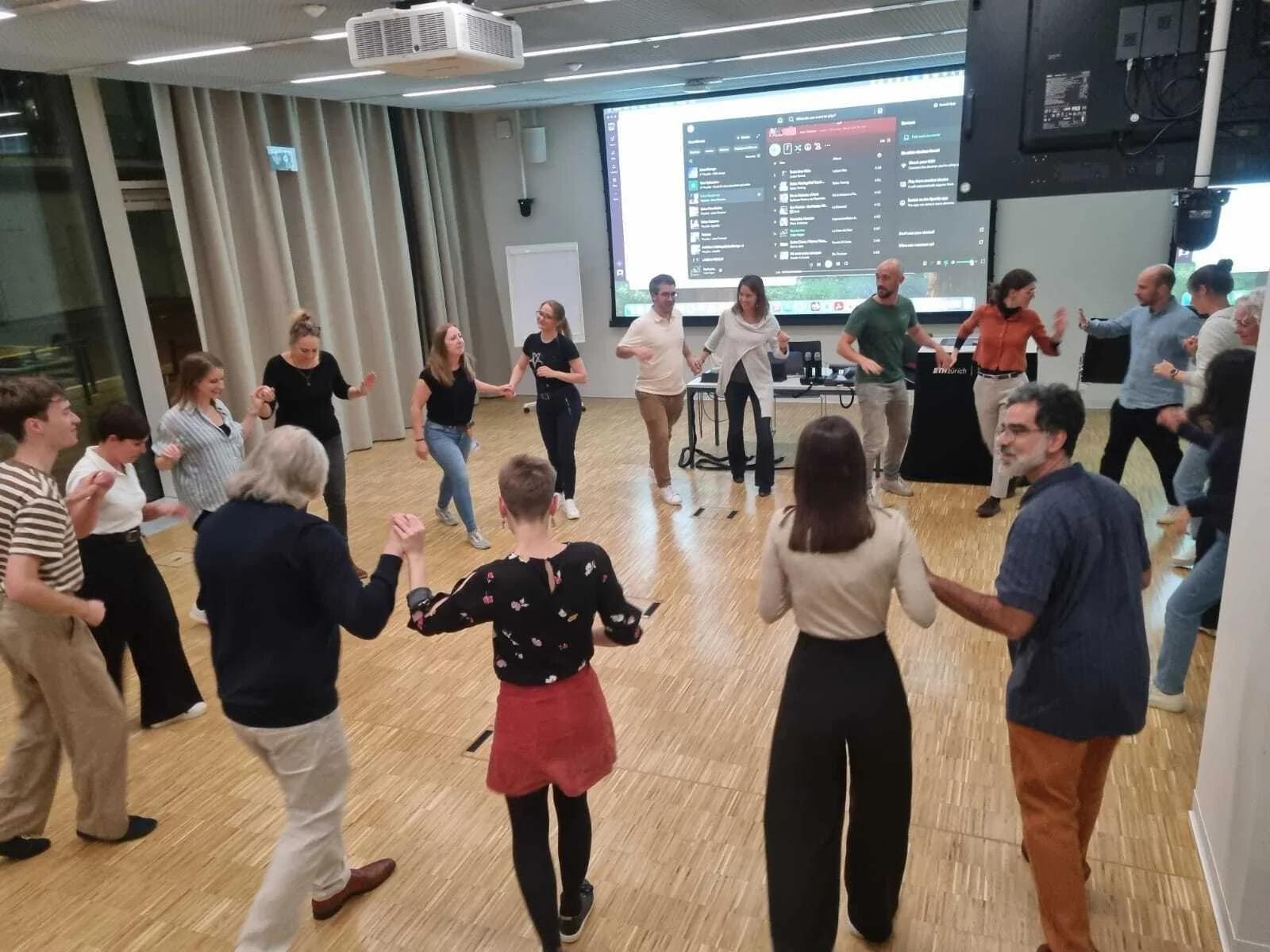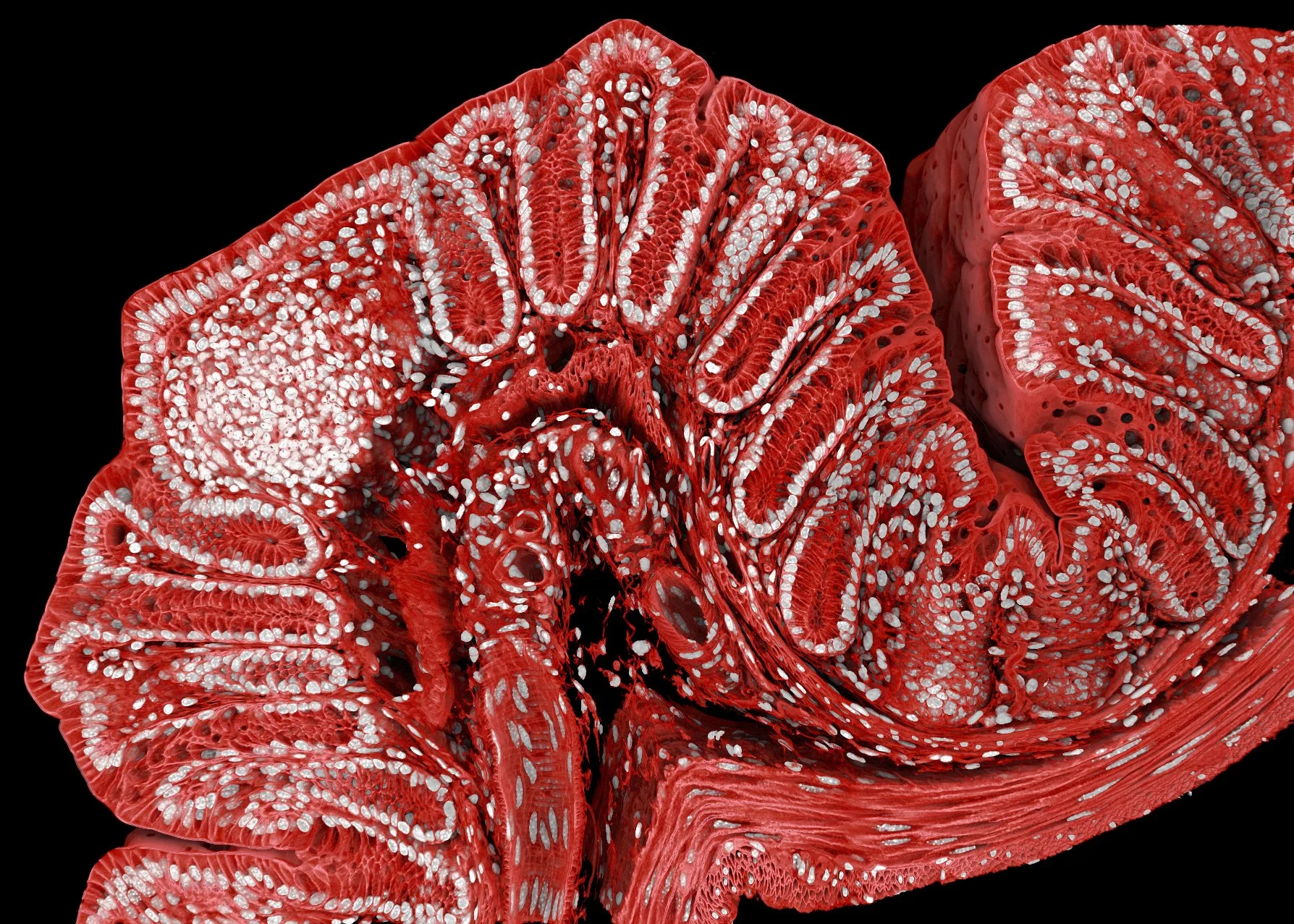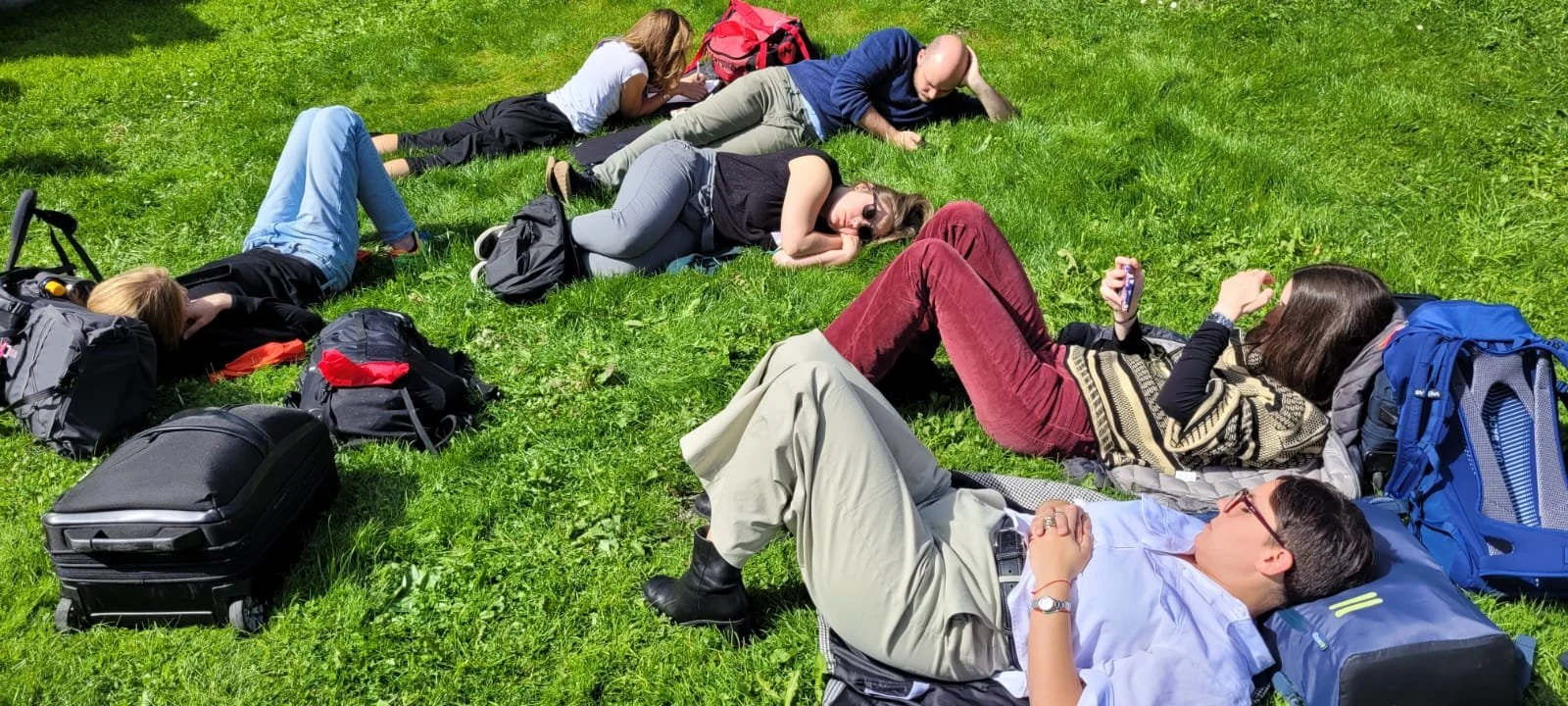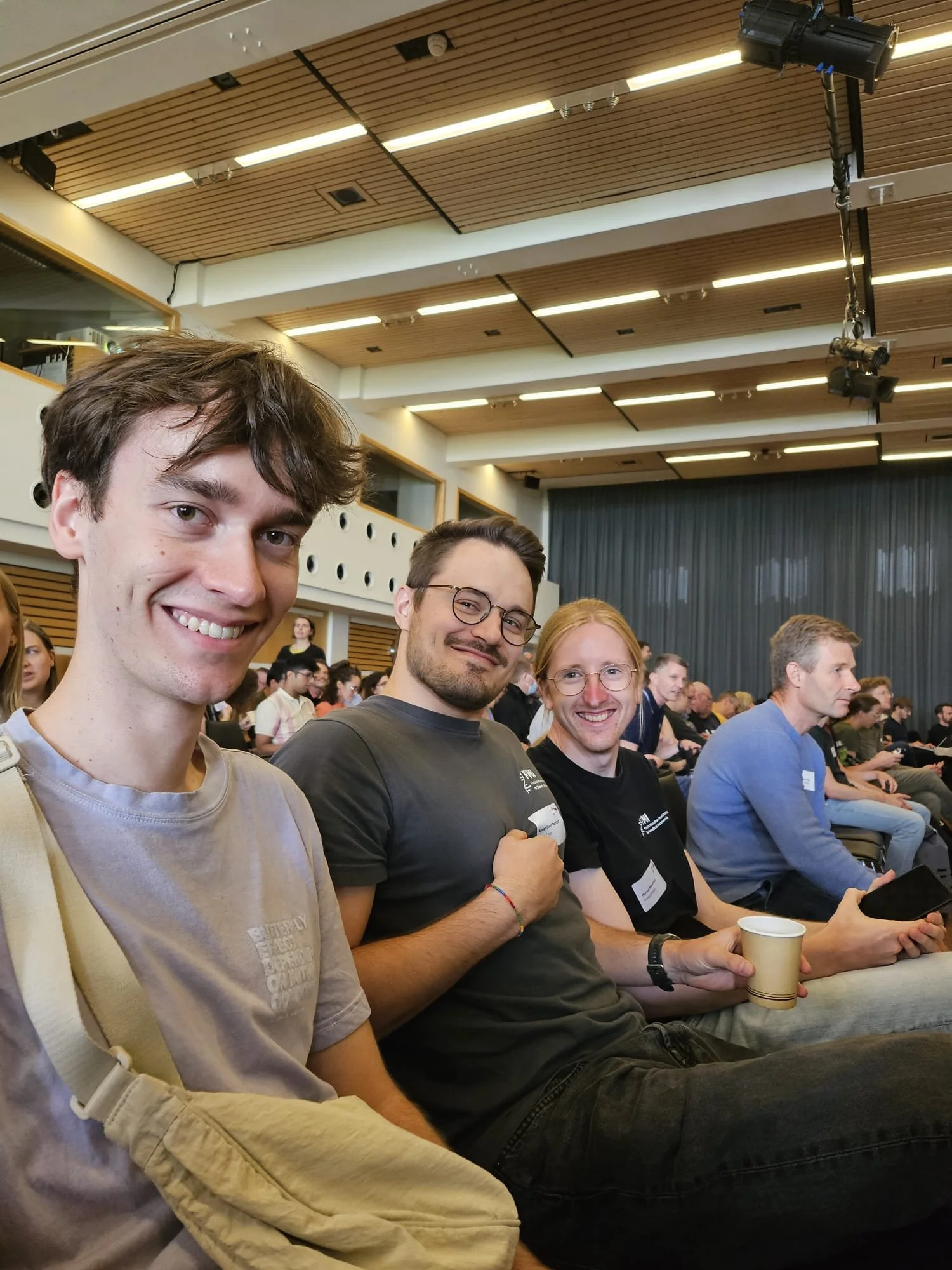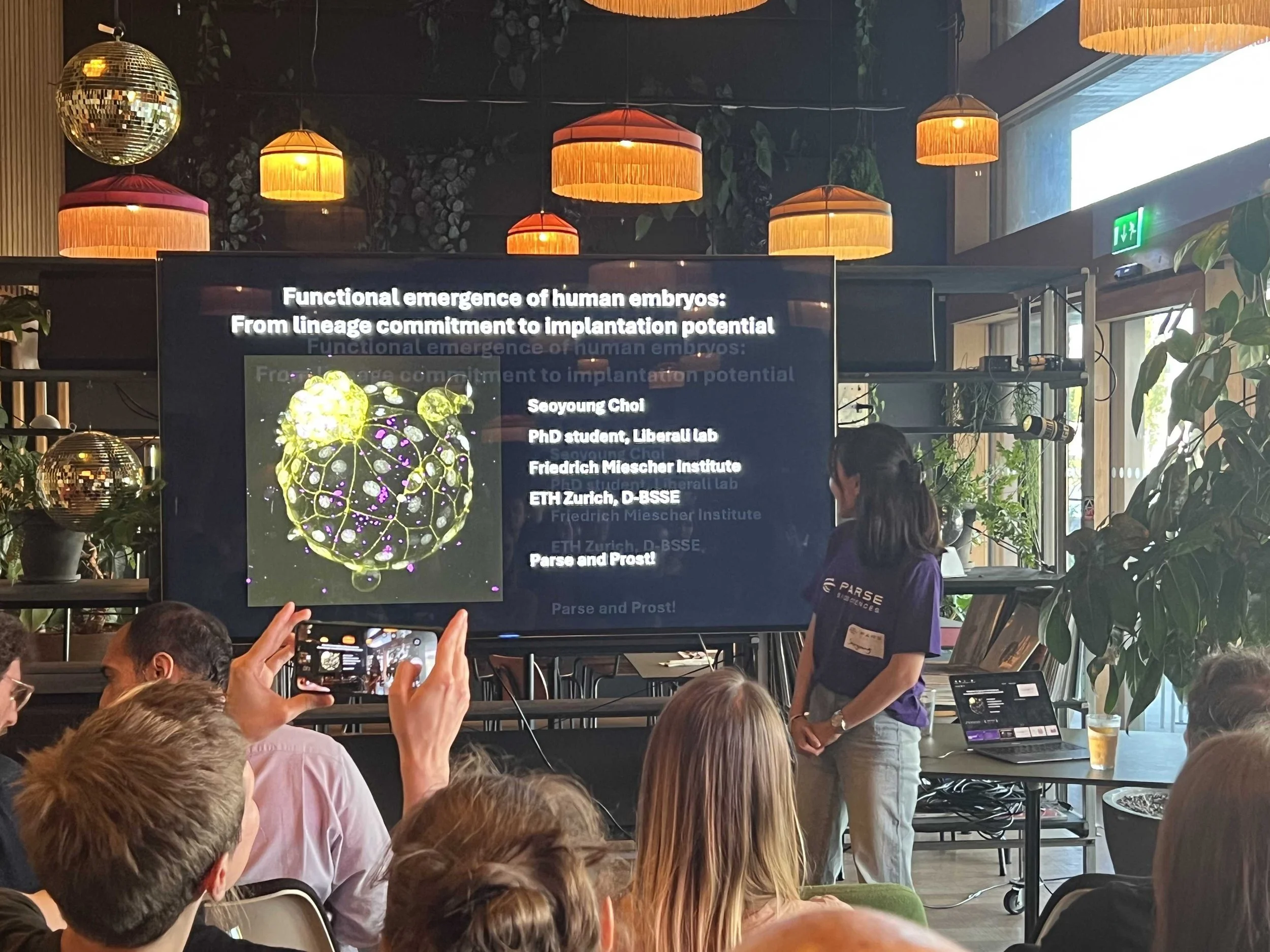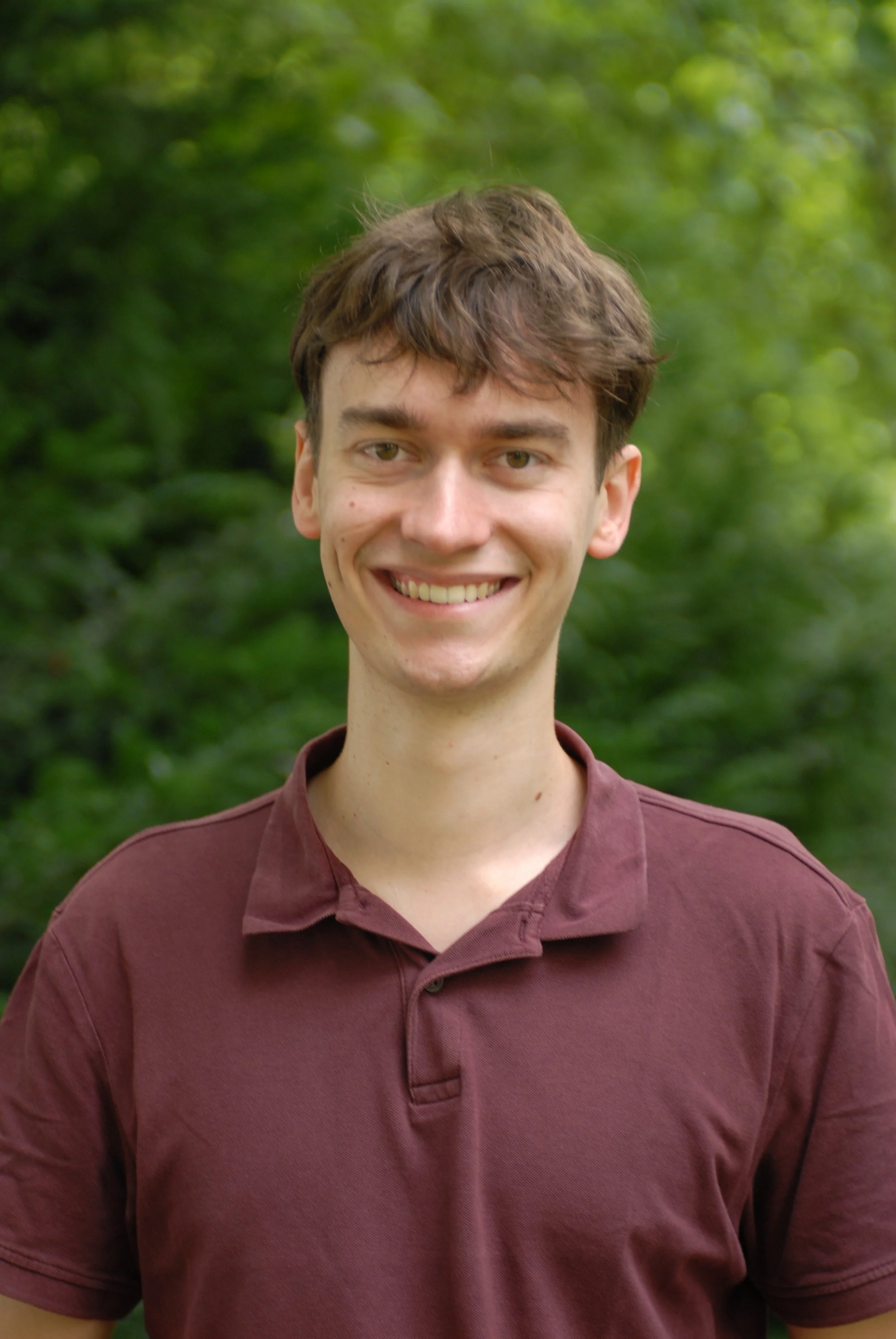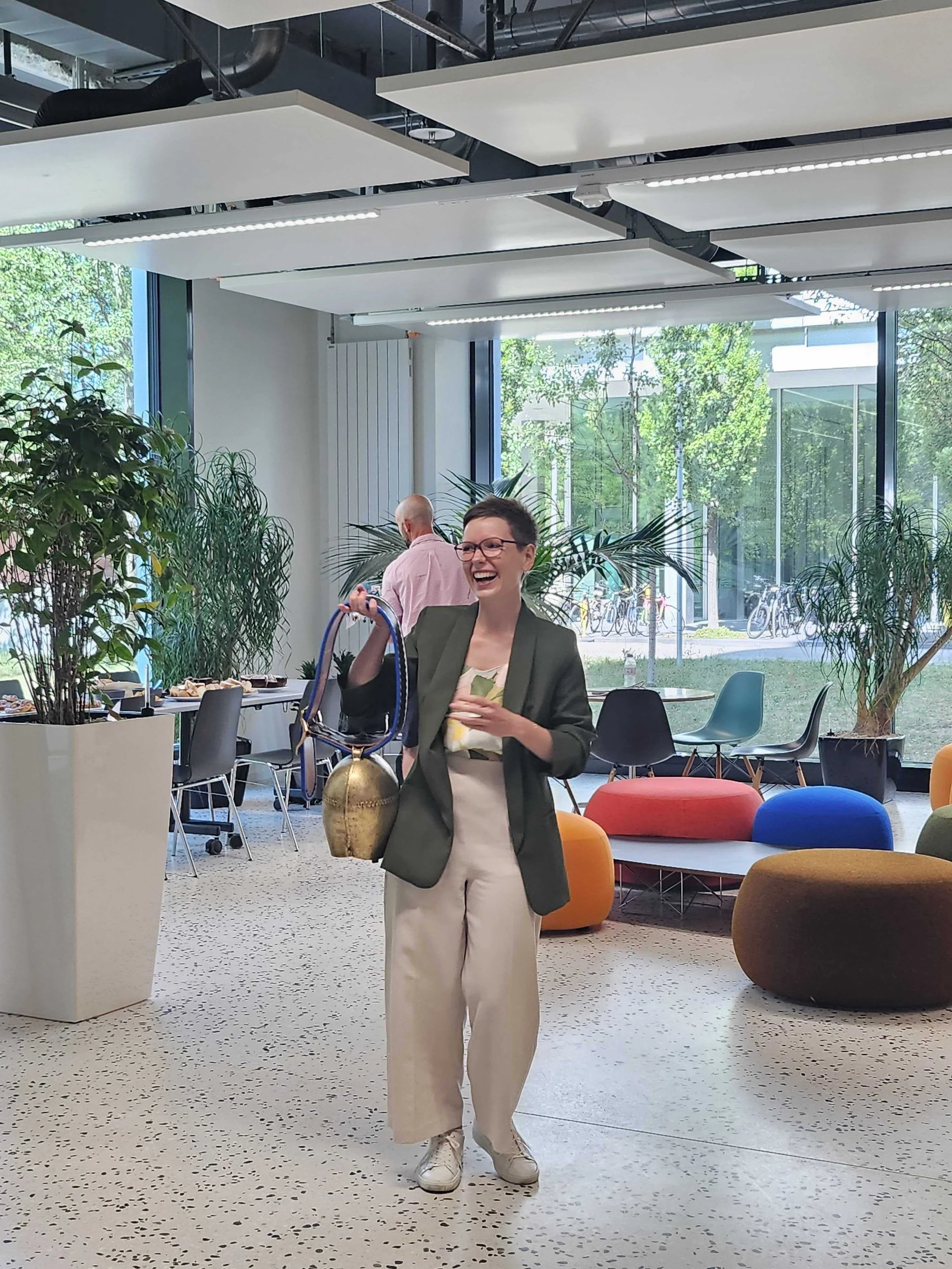Our lab enjoyed a fun and engaging workshop day, starting with the INSIGHT personality workshop with Paul, and followed by a lively salsa session led by Jens, our PhD student. It was a great opportunity to learn more about each lab member’s unique personality and to dance together! Take a sneak peek at our lab’s energetic salsa workshop.
Marius' colon image in the Nikon Small World Top 20
Marius made place 18 in the Nikon Small World Photomicrography Competition, a reference competition for light microscopy images, with his mouse colon image. The 3D rendering shows a 300 um thick cleared section of a mouse colon, where nuclei were stained with DAPI and the cell membranes were tagged endogenously with GFP. The volume was imaged with a Stellaris 8 and a 20x objective over several days at FMI and reconstructed with Drishti, an open source software common in the macroscopic imaging (MRI / CT) field. We use this image and others like it as introductory and teaching material.
Welcome Michele!
Welcome to our lab, Michele! Michele joined the lab as a shared postdoctoral researcher between our team and the DARe group at Novartis in September 2025. Welcome!
Libearli lab at FMI annual meeting
This year, our lab attended the FMI Annual Meeting in Davos. We enjoyed many inspiring talks from the FMI community and, of course, the gala dinner. Here’s a sneak peek at some of our happy moments!
Seoyoung gives a talk at Parsebioscience event
Seoyoung gave a talk at Parsebioscience happy hour event!
Elisa received a prestigious EMBO fellowship
Elisa recently received a prestigious EMBO postdoctoral fellowship!
Throughout her postdoc at Liberali lab, she will study epigenetic reprogramming during intestine regeneration. Congratulations, Elisa!
Welcome Jens!
Jens has joined the Liberali Lab since August 2025, to study the intricate role of mechanical cues and physical forces in the development of intestinal organoids
Welcome, Jens!
Clara's PhD defense
Congratulations to Clara for successfully defending her PhD!
Her research focused on mechano-chemical coordination in intestine morphogenesis and regeneration.
Clara did a wonderful presentation. We are so proud of her and wish her all the best in her next chapter!
The bell of success
During our 10th year celebration, Prisca rang our bell and with that our new lab tradition was born: the “Bell of Success”.
From now on, every time someone in the lab achieves something, whether big or small, they will ring the bell. When the bell rings, we pause our work to come together and celebrate the moment all together.
Looking forward to our fun moments through sharing our moment of success!
10 year anniversary party of the Liberali Lab
On 27th of June, we celerbated the 10 year anniversary of the Librali Lab at ETH D-BSSE. Our lab began in June 2015, and now in June 2025, our lab has reached a major milestone: 10 incredible years of science and collaboration.
To celebrate this special occasion, we invited our alumni, colleagues, and friends from both FMI, DBSSE, people who have helped shape our journey. It was an amazing evening of reflecting on the past ten years, celebrating our achievements, and sharing excitement for what lies ahead.
Take a sneak peak of our party through the photos!
Moving into DBSSE
The Liberali lab now has two home bases: ETH D-BSSE and FMI.
We’ve recently expanded to our second location at ETH D-BSSE and are excited to be fully operating across both institutes. This will provide us to engage and interact with two excellent scientific communities. Plus, we have our own high-tech coffee machine now at D-BSSE.
Check out some fun photos during our move!
New paper published in Nature Physics: Mechanochemical bistability of intestinal organoids enables robust morphogenesis
Prisca and Qiutan have published a new paper in Nature Physics together with the Hannezo lab. It explores the mechanical underpinnings of crypt formation in organoids with strong modelling and experimental parts. Check it out here: www.nature.com/articles/s41567-025-02792-1
Lab retreat with the Hannezo lab
This month we spent some wonderful days in the Austrian alps with the Hannezo lab from IST Austria, discussing our science, concepts and exploring further possible collaborations!
Lunch at Prisca's place!
We had a very nice lunch at Prisca’s place, where we cooked dishes from our own countries! It was such a great way to share a bit of our cultures with each other.
A very chill and wholesome lunch! 😊
Check out our recent preprint!
Preprint alert! Have you wondered how cell-to-cell heterogeneity drives intestinal regeneration? Then, check out our recent preprint!
Exploring Basel Christmas market!!
This year, we explored the charming christmas market in Basel! We enjoyed seasonal treats, warm gruhwein, and the holiday atmosphere. It was a nice way to celebrate the season :)
Christmas outing with Room escape!
For the Christmas outing, the Liberali lab went for the Room escape this year! It was a day filled with teamwork, puzzles, and plenty of laughs as everyone worked together to solve mysteries :)
Prisca got a prestigious Basel Wissenschaftpreis!!
Prisca have been granted this year’s Science Prize by the City of Basel in honor of her pioneering work on collective behaviors of developmental and regenerative systems. Every year, exceptional researchers based in Basel receive the prize, which is worth 20,000 Swiss Francs.
To celebrate Prisca’s award, the entire Liberali lab went to Rathaus! Check out the fun moment during apero :)
Check out Prisca's recent review!
Prisca and Alex wrote the amazing review for the 50th Cell Press. In this review, they explain how developmental biology field has been accelerated by emerging model systems and technological advancements in imaging, engineering, and computational biology. Congratulations!
The evolution of developmental biology through conceptual and technological revolutions: Cell
Prisca announced as Professor at ETH Zürich
Exciting news! Prisca has been officially announced as Professor of Multicellular Systems at the ETH Zürich, leading to a double affiliation with the Department of Biosystems Science and Engineering (D-BSSE) of the ETH and with the Friedrich Miescher Institute (FMI). Both institutes are located in Basel, making it possible for our group to combine our work in two fantastic research environments and foster collaborations even further. We are all very excited for the new opportunities and proud of Prisca’s recognition as a leading expert in the field!


